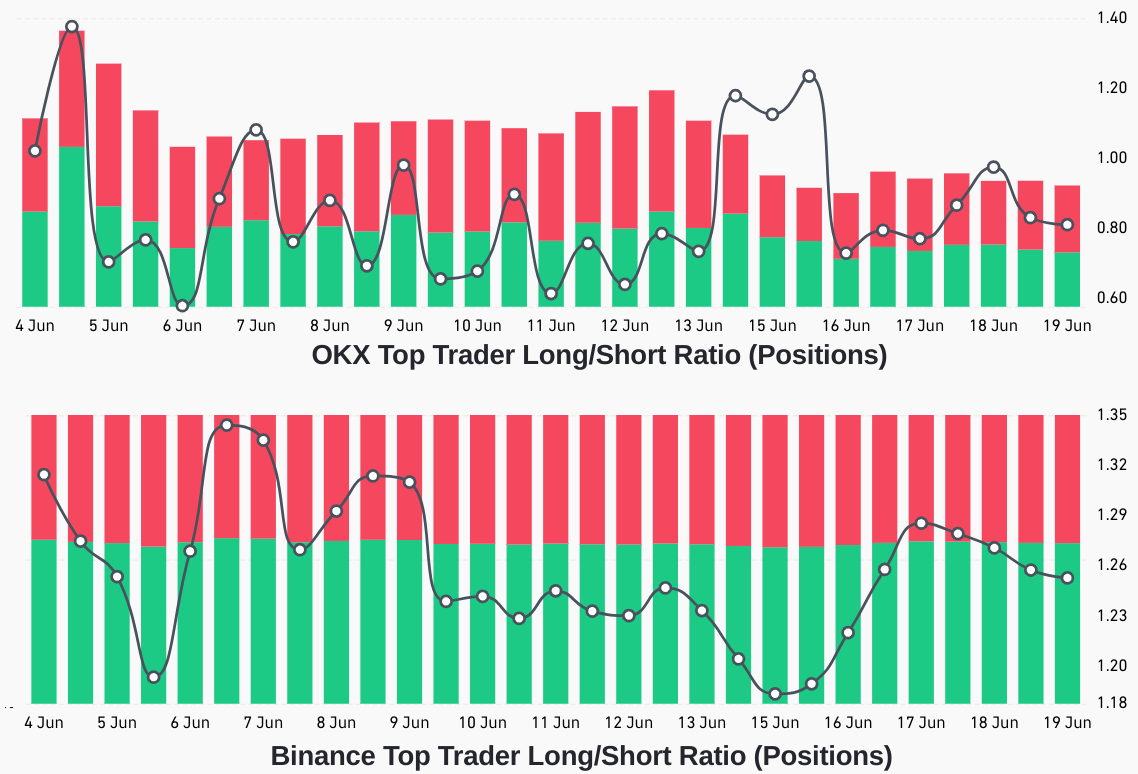After a momentary retest of the $25,000 support on June 15, Bitcoin gained 6.5% as bulls successfully defended the $26,300 level. Despite this, the general sentiment remains slightly bearish as the cryptocurrency has declined by 12.7% in two months.
The dismissal of Binance.US’s temporary restraining order by Judge Amy Berman Jackson of the United States district court is somewhat related to investors’ sentiment improving. On June 16, the exchange reportedly reached an agreement with the U.S. Securities and Exchange Commission (SEC), avoiding the freeze of its assets.
On a longer timeframe, the global regulatory environment has been extremely harmful to cryptocurrency prices. Besides the SEC trying to unilaterally label exactly which altcoins it views as securities and litigating with the two leading global exchanges, the European Union signed the Markets in Crypto-Assets (MiCA) regulations into law on May 31. This means crypto businesses have set timelines to implement and comply with MiCA’s requirements.
Curiously, while Bitcoin’s (BTC) performance has been lackluster, on June 16, the S&P 500 index reached its highest level in 14 months. Even with this recovery, JPMorgan strategists expect the rally to come under pressure in the second half of 2023 “if growth stalls in absolute terms.”
Investors will keep their focus on the U.S. central bank, with Federal Reserve Chair Jay Powell set to testify before the House Financial Services Committee on June 21 and the Senate Banking Committee on the morning of June 22 as part of his semi-annual testimony before lawmakers.
Let’s look at Bitcoin derivatives metrics to better understand how professional traders are positioned amid weaker macroeconomic perspectives.
Bitcoin margin and futures show mild demand for leverage longs
Margin markets provide insight into how professional traders are positioned because they allow investors to borrow cryptocurrency to leverage their positions.
OKX, for instance, provides a margin-lending indicator based on the stablecoin/BTC ratio. Traders can increase their exposure by borrowing stablecoins to buy Bitcoin. On the other hand, Bitcoin borrowers can only bet on the decline of a cryptocurrency’s price.
The above chart shows that OKX traders’ margin-lending ratio has been declining since June 10, indicating the overwhelming dominance of longs is over. The present 23:1 ratio favoring stablecoin lending still favors bulls but sits near the lowest levels in five weeks.
Investors should also analyze the Bitcoin futures long-to-short metric, as it excludes externalities that might have solely impacted the margin markets.

There are occasional methodological discrepancies between exchanges, so readers should monitor changes instead of absolute figures.
Top traders at OKX vastly decreased their shorts on June 15 as the Bitcoin price plunged to its lowest level in three months at $24,800. However, those traders were not comfortable keeping a ratio that favored longs, and it has since moved back to a 0.80 ratio, in line with the two-week average.
The opposite movement happened at Binance, as top traders reduced their long-to-short ratio to 1.18 on June 15 but subsequently added longs, and the indicator stands at 1.25. Albeit an improvement, Binance’s top traders’ long-to-short ratio is presently in line with the previous two-week average.
Related: Hawkish Fed, stocks market rally, and crypto falling behind
Bitcoin’s price gains are capped despite resilience in derivative metrics
Overall, Bitcoin bulls lack the confidence to leverage long positions using margin and futures markets. BTC lacks momentum as investors’ attention has shifted to the stock market after the Fed decided to pause its interest rate hikes, improving the outlook for corporate earnings.
Despite the extremely negative regulatory pressure, professional traders did not flip bearish, according to Bitcoin derivatives metrics. However, bears have the upper hand as the 20-day resistance at $27,500 strengthens, limiting the short-term upside to a mere 3.8%.
This article is for general information purposes and is not intended to be and should not be taken as legal or investment advice. The views, thoughts, and opinions expressed here are the author’s alone and do not necessarily reflect or represent the views and opinions of Cryptox.
This article does not contain investment advice or recommendations. Every investment and trading move involves risk, and readers should conduct their own research when making a decision.




